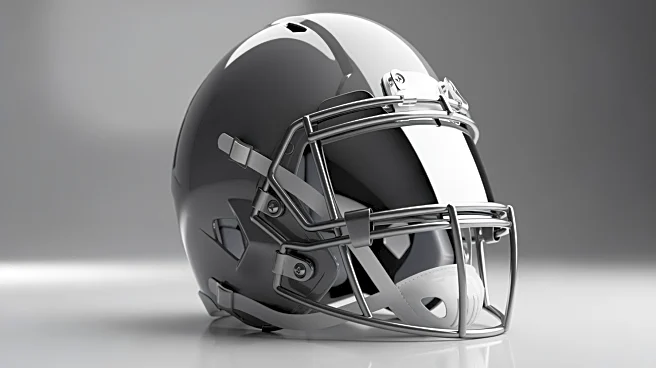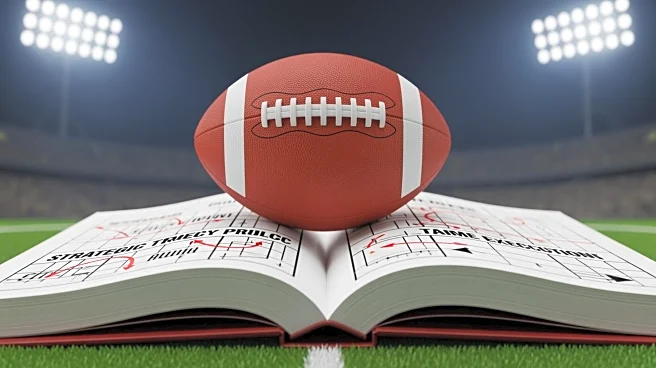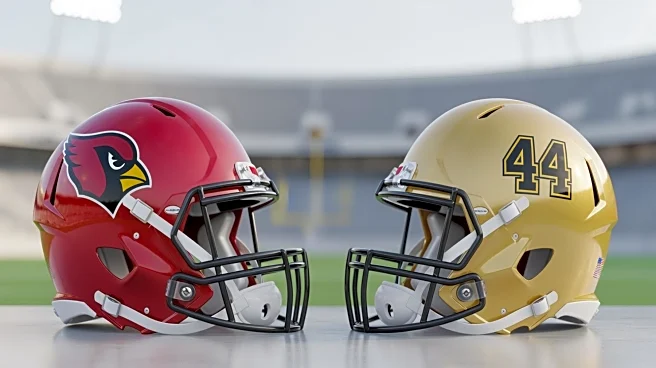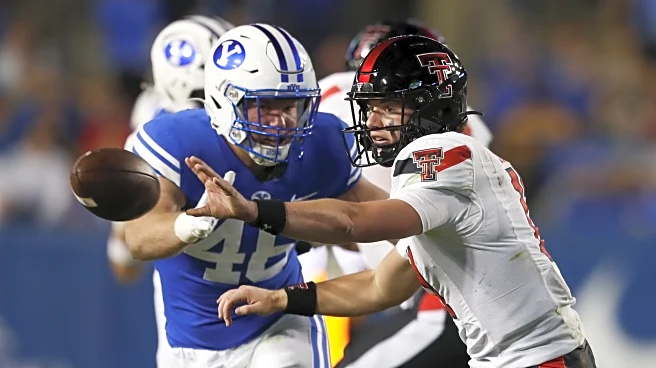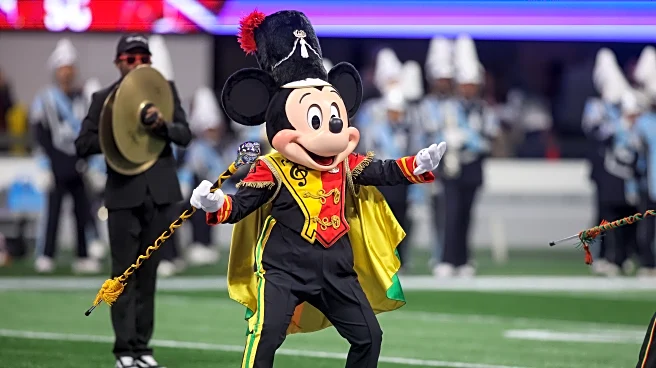What's Happening?
During a recent Fox broadcast of the Northwestern-USC college football game, announcer Jason Benetti and color commentator Robert Griffin III were caught off guard by a deceptive play executed by USC.
The team ran a fake punt, which initially appeared to be thrown by punter Sam Johnson. However, it was later revealed that the pass was actually thrown by backup quarterback Sam Huard, who was wearing a different jersey number to disguise his identity. Huard is the son of former NFL quarterback Damon Huard and the nephew of Brock Huard, a former broadcast partner of Benetti. The play resulted in a touchdown for USC, and the realization of the deception led to humorous commentary from Griffin III and Benetti.
Why It's Important?
This incident highlights the strategic and deceptive tactics sometimes employed in college football to gain an advantage over opponents. The successful execution of the fake punt not only contributed to USC's scoring but also showcased the team's ability to creatively manipulate player roles for strategic gain. For viewers, it provided an entertaining moment that underscores the unpredictable nature of live sports broadcasts. The involvement of Sam Huard, with his familial ties to notable NFL figures, adds an interesting layer to the story, potentially increasing viewer engagement and interest in the game.
What's Next?
As the college football season progresses, teams may continue to employ similar deceptive strategies to outmaneuver opponents. This could lead to increased scrutiny from commentators and analysts, who will be on the lookout for such plays. Additionally, the humorous exchange between Benetti and Griffin III may encourage broadcasters to embrace more light-hearted and engaging commentary styles, enhancing the viewing experience for audiences.
Beyond the Headlines
The use of deception in sports raises ethical questions about the balance between fair play and strategic advantage. While such tactics can be thrilling for spectators, they also challenge the integrity of the game, prompting discussions about sportsmanship and the rules governing player conduct. This incident may spark conversations among sports analysts and fans about the acceptable limits of deception in sports.




